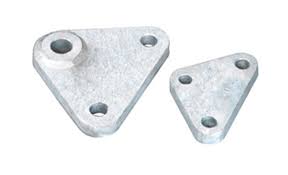
A yoke plate is a component used to connect and secure conductors to the insulator and other components. It helps the devices to pivot or rotate relative to each other. It is U-shaped or forked designed to support and align the conductors. A yoke plate helps to provide a connection point that allows for movement and flexibility. It is a cross-shaped component that holds the passage of a pin or shaft. It has many slots for attaching fasteners or pivot points. Advances in yoke plates technologies help to ensure the reliability of power transmission in South America’s electrical grid. Common types include single clevis, double clevis, adjustable yoke plates. They find use in applications that need a controlled movement. These applications include transmission lines, telecommunications, machinery and vehicle manufacturing.
Key features of yoke plate
A yoke plate has various features that depend on the specific design and intended application. There are common features and characteristics important for yoke plates for various applications. They help to increase the reliability and efficiency of the plate. The following are the key features of yoke plates.
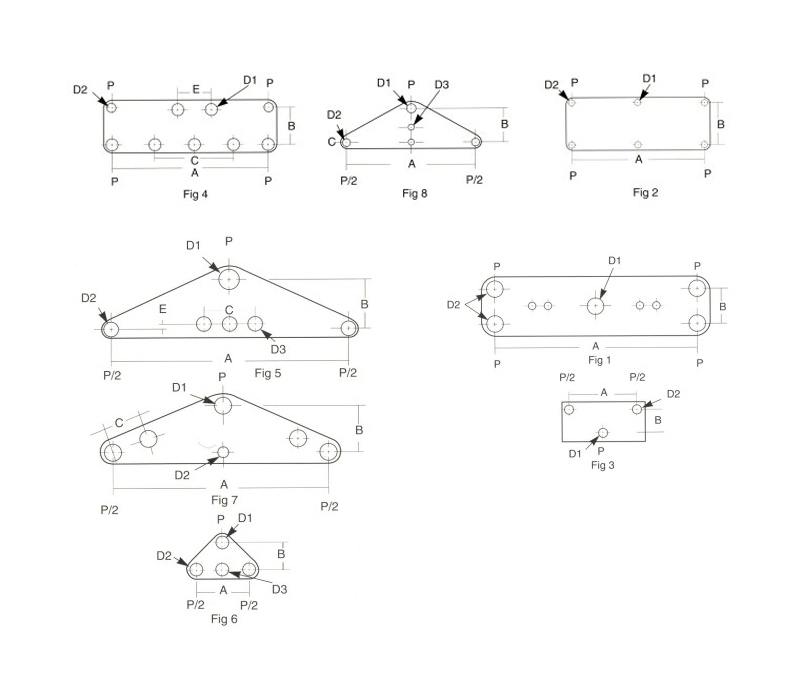
- Design – they are available in various designs to accommodate different attachment configurations.
- Load capacity – yoke plates help to ensure they can safely support the weight and forces experienced in the application.
- Corrosion resistance – they have coatings and materials that resist corrosion in outdoor applications.
- Electrical insulation – they provide insulation between the conductor and the support structure.
- Ease of installation – yoke plates have simple designs for user friendly attachment points and clear labelling.
- Maintenance and durability – the plates require minimal maintenance and have a long service life. This is to reduce downtime and replacement costs.
- Material – they are from durable and corrosion resistant materials such as steel, aluminum or other materials. This helps to ensure longevity and reliability of the installation.
- Attachment points – some of the plates allow for precise positioning and tensioning of conductors.
- Insulator attachment – they have necessities that securely connect insulators or insulator strings. This is vital for electrical insulation in transmission and distribution lines.
Selection and installation of yoke plate
The selection process of the yoke plate depends in various factors related to the specific application. It includes considering various factors that influence the decision-making process. These factors include load capacity, conductor size, adjustability, corrosion resistance and costs. Additionally, it is advisable to consult with industry professionals for guidance on the best plate. The installation should ensure the stability and functionality of the various applications. The following is a basic guide on the installation of the yoke plate.
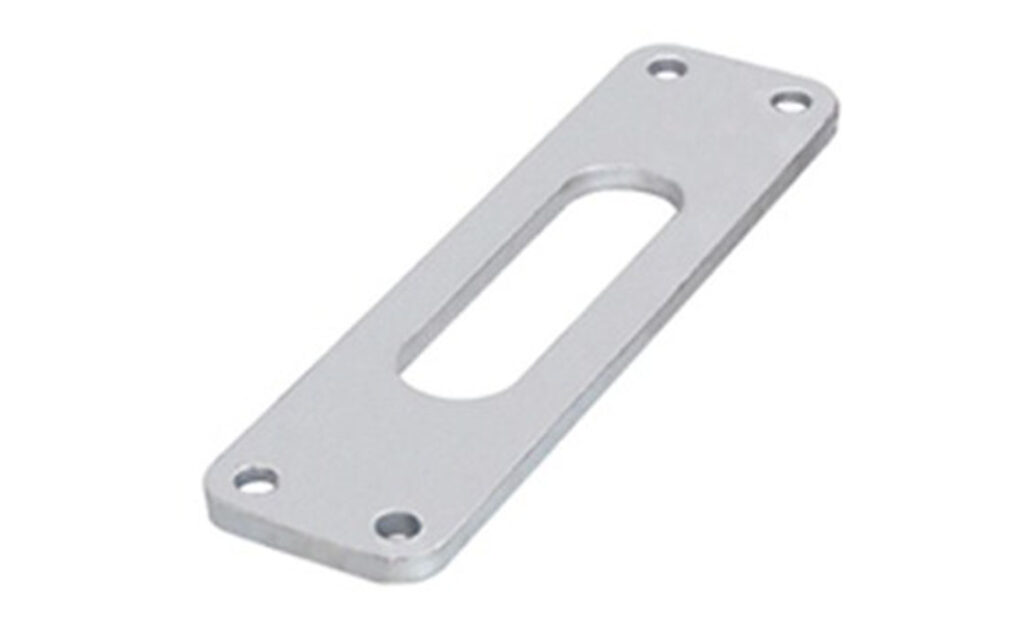
- Preparation – gather all the necessary tools required for the installation. These include yoke plates, fasteners, insulators, measuring tools, ladders and safety gear.
- Pre-installation inspection – inspect the yokes to ensure they are in good condition, free from defects or damage.
- Preparation of work area – make sure you have proper access such as work platform, bucket truck or other equipment.
- Positioning – position the yoke plate at the desired location on the structure or component. Ensure proper alignment for the attachment of conductors.
- Attachment points – attach the conductors to the plate’s attachment points. This is using bolts, clevis pins or other suitable fasteners.
- Insulator installation – install the insulators on the yoke plate and ensure they are properly secured.
- Alignment and tensioning – adjust the position and tension of the conductors to ensure the functionality of the line.
- Tightening fasteners – tighten all fasteners ensuring they are secure and not too tight.
- Final inspection – conduct a final inspection to ensure all components are correctly installed, aligned and tensioned.
- Documentation – maintain records of the installation including the date, test and inspections.
Maintenance and inspection of yoke plate
Proper maintenance and inspection of yoke plates help to ensure their continued reliability and safety. It also helps to identify and address potential issues tat may cause accidents. The frequency of the maintenance and inspection depends on the environmental conditions of the installation. Also, it is advisable to perform professional maintenance and inspection of the lates once in a while. The following is a basic guide of the maintenance and inspection of the yoke plates.
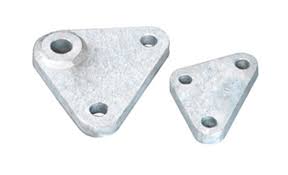
- Conduct regular inspections of yoke plates at scheduled intervals depending on the type of application.
- Inspect the yoke plate visually for signs of wear, damage or corrosion.
- Check the alignment and tension of conductors, cables or components connected to the yoke plates using suitable tools.
- Assess the performance of vibration-damping elements and verify that they function properly.
- Ensure the yoke plates are within their rated load capacity for any visible signs of deformation and address them promptly.
- Inspect the work area for any safety hazards such as loose or damaged yoke plates, fasteners or components.
- Periodically clean the yoke plates to remove dirt, dust and contaminants that can lead to corrosion or wear.
- Apply lubrication as recommended by the manufacturer to prevent friction and reduce wear.
- Check for corrosion and apply anti-corrosion coatings as specified by the manufacturer.
- Ensure proper tightening of the fasteners and check for loose or damaged fasteners and replace them as needed.
- Replace damaged or corroded yoke plates to prevent safety risks and operational issues.
- Maintain detailed records of inspection dates, findings and any maintenance or repairs performed.
Comparative analysis of yoke plate in South America
A comparative analysis includes evaluating and assessing different designs, types and brands of yoke plates. This helps to provide insights in the usage, trends and preference in various industries and applications. Additionally, it is important to consult with local experts and industry professionals to gain deeper understanding of the factor influencing the selection. The following are the key factors to include in a comparative analysis in South America.
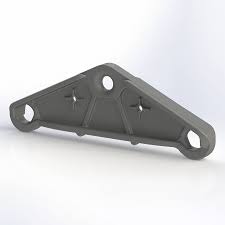
- Industry trends – identify the emerging trends in the usage of yoke plates. This includes the increasing adoption of renewable energy sources such as wind energy applications.
- Costs – compare the costs of yoke plates in the market to meet the budget considerations.
- Material – consider the best material that best suits the specific countries and environments. The common materials include steel or aluminum.
- Local manufacturing – availability of local manufacturing influences pricing, availability and customization options.
- Regional variations – consider the regional conditions such as coastal regions, high-altitude areas and tropical climates.
- Environmental conditions – evaluate the capacity of the yoke plate to enhance sustainability.
- Customization – check whether the yoke plates have customization features. This helps to meet the specific regional requirements.
- Innovation and technology adoption – evaluate the presence of new technologies or innovations in yoke plate designs. This includes features such as vibration damping or improved electrical insulation.
Certifications and standards in South America
There are various certifications and standards that help to ensure the quality, safety and performance of the plates. These standards and certifications vary by country while some adopt to the international standards. Additionally, it is important to ensure the selected yoke plate meets the relevant standards and certifications in the country. The following are the common standards in South America.
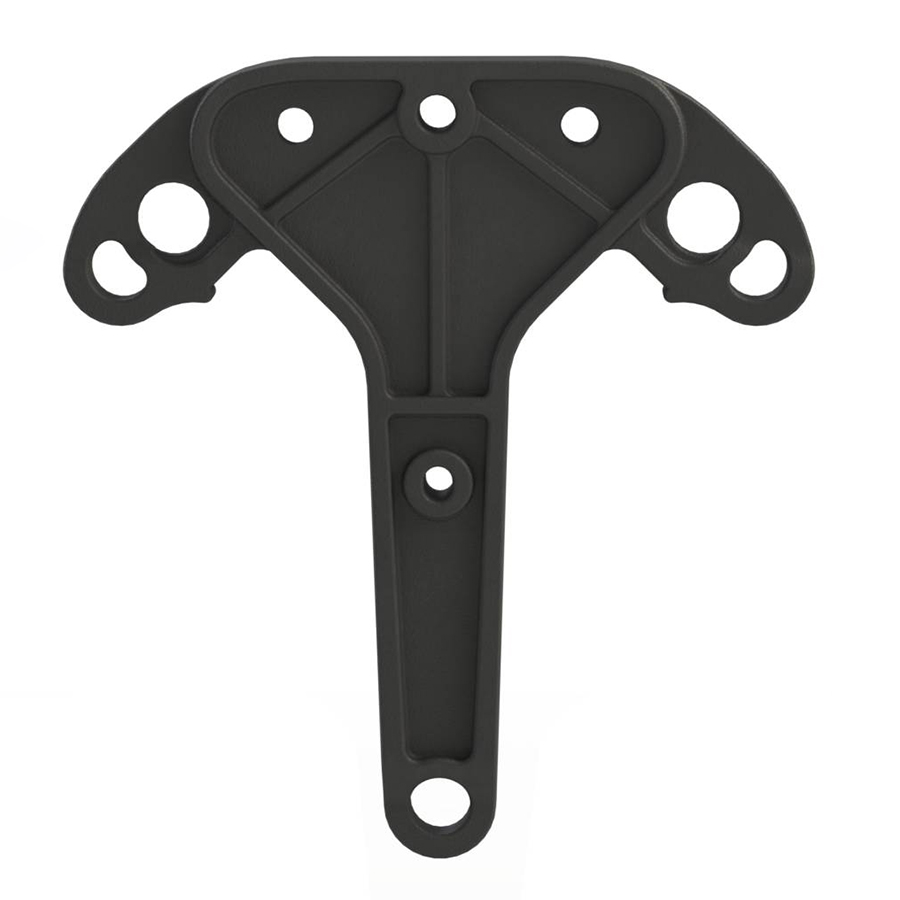
- ISO certifications – this helps to ensure quality of the yoke plates and suitability to the environment.
- ASTM international standards – these are American standards for testing and materials used worldwide.
- National standards – each south American country has their own set of national standards that apply to yoke plates.
- Utility and power standards – power utility companies have their own internal standards for equipment and components used in transmission.
Regional market for yoke plates in South America
There are various market trends and dynamics that influence the availability of yoke plates in the market. This also influences the demand and supply of the plates in South America. This depends in industrialization, infrastructure development and specific needs of each area. Various players in the market include Peru, Venezuela, Colombia, Chile, Argentina and Brazil. Additionally, it is advisable for manufacturers to observe these trends to ensure their success in the market. The following are the factors that shape the regional market in South America.
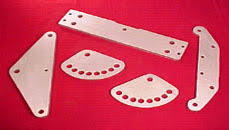
- Import and manufacturing – availability of local and international manufacturers influences the pricing and availability of the yoke plates.
- Market trends – trends such as renewable energy technologies and expansion of telecommunication networks influence the market.
- Key sectors – yoke plates find use in various sectors of the industry. These include power transmission, telecommunications, agriculture and construction.
- Regional variations – the demand for yoke plates vary significantly within countries due to regional economic disparities.
- Electrification – the growth of rural areas requires the use of electrical components for power transmission. This influences the demand and availability of yoke plates in the region.
